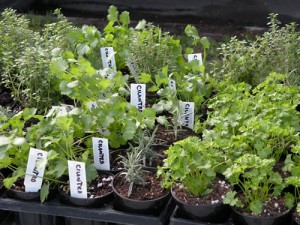 Farmers markets have emerged as an integral part in the urban-farm connection. According to the US Department of Agriculture, over 4,600 markets operate in the country, a number that is increasing rapidly and reflects a growing consumer interest in obtaining fresh products directly from the farm.
Farmers markets have emerged as an integral part in the urban-farm connection. According to the US Department of Agriculture, over 4,600 markets operate in the country, a number that is increasing rapidly and reflects a growing consumer interest in obtaining fresh products directly from the farm.
These markets are an important source of farming revenue with well over 19,000 farmers reporting that they sell their produce only at farmers markets (USDA study from 2000). Just as important is the fact that many markets, such as the Elmwood-Bidwell Farmers Market, emphasize locally-grown produce as opposed to simply reselling produce grown anywhere. This emphasize provides important support to regional economies.
82 percent of markets are self-sustaining; market income is sufficient to pay for all costs associated with the operation of the market (not including grant or in-kind support). Farmers Markets are real economic development engines – not just community amenities.
WHO BENEFITS FROM FARMERS MARKETS
Strong farmers markets deliver a broad range of benefits, including those for:
- Small farm operators: Those with less than $250,000 in annual receipts who work and manage their own operations meet this definition (94 percent of all farms).
- Farmers and consumers: Farmers have direct access to markets to supplement farm income. Consumers have access to locally grown, farm-fresh produce and the opportunity to personally interact with the farmer who grows the produce.
- The Community: Many urban communities where fresh, nutritious foods are scarce gain easy access to food. Farmers markets also help to promote nutrition education, wholesome eating habits, and better food preparation, as well as boosting the community’s economy.





